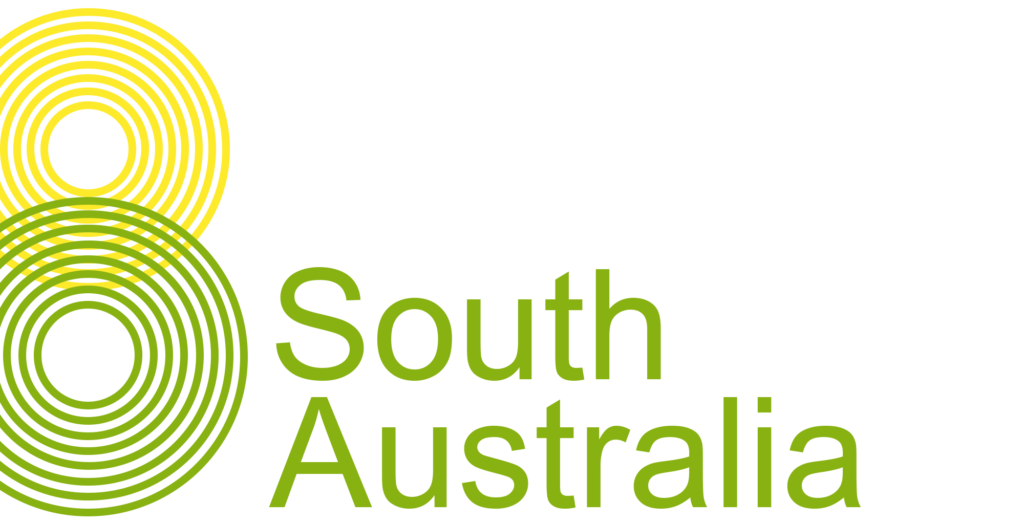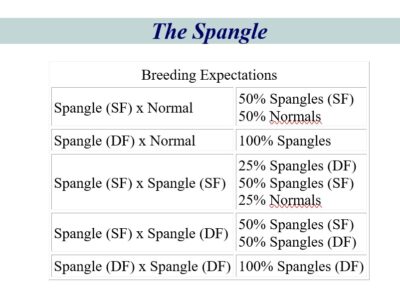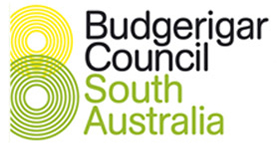
The Spangle Double Factor Budgerigar
Spangle Double Factor Budgerigars are a double dose of the Spangle gene, expressed as a pure yellow, or pure white bird. It is believed that the double up of the Spangle gene results in a stronger spangle effect, that removes all body markings and colour. The exception is the double factor spangle melanistic, which can appear similar to a clearwing with lower body colour intensity.
History of the Spangle Mutuation
In 1971, Mr Sergio Casagrande of Reservoir, Victoria first observed birds of the variety now known as Spangle in his aviary. The Budgerigar Council of Australasia (B.C.A) Secretary, Mr Harry Eady, observed these birds in 1972. Mr. Merv Jones of Traralgon, Victoria is credited with the establishment of the mutation as he first bred them in 1974 from a single bird he purchased from his neighbour, Albert Richie. Within two years, Mr. Jones had bred sixty similar birds, and some clear yellow or white birds had also appeared, which people called the Spangle Double Factor. He sought advice from the leading Victorian breeder, Mr. Frank Gardner, believing he had something different.
In 1976, someone took six of the unusual-looking birds to the Gardner Shield Show for Mr. Gardner to see. Mr. Gardner confirmed that they were indeed a new mutation. Fanciers had used the term “spangley” to describe the birds. Mr. Gardner adopted the name Spangle for the new variety, as they resembled the spangle markings in poultry. We can attribute the recognition that the clear yellow and white birds are the same mutation to Mr. Geoff Gardiner. We should not confuse Geoff, who was a young enthusiast at the time, with Frank. Geoff has gone on to become a leading fancier and Senior Judge in Victoria.
Breeders have produced Spangle Double Factors in various forms, some almost pure self-colored, and some with a collar of body color. Others appear as pale-coloured Clearwings due to the inclusion of melanistic Spangle.

Image Courtesy of Rod Turnbull and the ANBC
Identification of The Exhibition Standard of Perfection
The Double Factor Spangle budgerigar boasts solid and uniform full intensity color throughout its body, rump, and underparts. Moreover, its mask is wide and deep, extending beyond two large cheek patches without any cleft. Furthermore, it has silvery white cheek patches on both yellow (buttercup) and white varieties. Additionally, the wings match the body color, with the primary flights and tail feathers approaching full body color. Another noteworthy feature is the black eye with a white iris ring. Additionally, the feet are either blue/grey, pink, or a mixture of both. Finally, the hen has a brown cere, while the cock has a blue cere.

Suggested Pairings to Produce Double Factor Spangle Budgerigars
To breed Spangle Double Factors successfully, it is best to pair them with good quality normal Spangles. Pairing Spangle to Spangle can result in double factor spangles. To avoid the body color collar below the mask, breeders often use a Cinnamon wing background. Additionally, the Cinnamonwing gene helps to produce an even spread of pale body color suffusion. A Cinnamon wing Opaline background could be even more effective because both Cinnamon wing and Opaline weaken body color modifiers. Finally, for assistance in determining the role of Opaline as part of the background, seek advice from a breeder specialising in Spangle Double Factors.

Click here to download this in full
